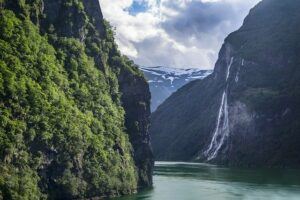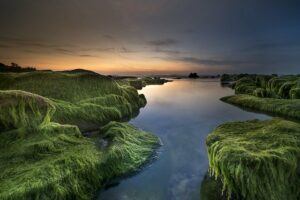Introduction
Energy acquisition in the deep sea differs significantly from energy acquisition near the ocean’s surface. The deep sea is a dark, cold, and high-pressure environment, which presents unique challenges for organisms to obtain energy. In contrast, near the ocean’s surface, sunlight is abundant, and the conditions are more favorable for photosynthesis and other forms of energy acquisition. This article will explore the differences in energy acquisition strategies between these two regions of the ocean.
Chemical Energy Acquisition in the Deep Sea
In the deep sea, where sunlight cannot penetrate, organisms rely on alternative sources of energy. One primary source is chemical energy derived from the breakdown of organic matter that sinks from the surface. This organic matter includes dead organisms, fecal pellets, and other detritus. Deep-sea organisms, such as bacteria and filter-feeding animals, utilize specialized adaptations to extract energy from these particles. Bacteria, for example, can break down complex organic molecules through chemosynthesis, a process that converts chemicals into energy.
Bioluminescence and Energy Acquisition
Another unique energy acquisition strategy in the deep sea is bioluminescence. Many organisms in this environment have developed the ability to produce light through chemical reactions within their bodies. Bioluminescence serves various purposes, including attracting prey, confusing predators, and communication. By using bioluminescence, deep-sea organisms can attract prey towards them, making energy acquisition more efficient in the darkness of the deep sea.
Photosynthesis and Energy Acquisition near the Ocean’s Surface
Near the ocean’s surface, where sunlight is abundant, energy acquisition primarily revolves around photosynthesis. Photosynthetic organisms, such as phytoplankton and algae, use sunlight, carbon dioxide, and water to produce organic compounds and oxygen. These organisms form the base of the marine food chain, providing energy for other organisms through consumption. Sunlight is a crucial factor in the productivity of the surface ocean, allowing photosynthetic organisms to thrive and support a diverse array of marine life.
Food Chains and Energy Transfer
Energy acquisition in both the deep sea and near the ocean’s surface involves the transfer of energy through food chains. However, the complexity and structure of these food chains differ between the two regions. Near the surface, the food chain is relatively straightforward, with primary producers (photosynthetic organisms) being consumed by herbivores, which are then preyed upon by carnivores. This transfer of energy allows for a relatively efficient flow of energy from the sun to higher trophic levels.
In the deep sea, the food chain is more complex and often relies on detritus-based ecosystems. Organic matter sinking from the surface serves as the primary energy source, and organisms at different depths feed on this detritus. The energy transfer in the deep sea food chain is slower and less efficient compared to the surface, as the organic matter undergoes decomposition and degradation during its descent.
Conclusion
In conclusion, energy acquisition in the deep sea differs significantly from energy acquisition near the ocean’s surface. While near the surface, photosynthesis is the primary energy acquisition strategy, in the deep sea, organisms rely on chemical energy derived from sinking organic matter and bioluminescence. The deep sea food chain is more complex and relies on detritus-based ecosystems. Understanding these differences is crucial for comprehending the unique adaptations and ecological dynamics of organisms in these contrasting oceanic environments.
References
– National Oceanic and Atmospheric Administration (NOAA): www.noaa.gov
– Woods Hole Oceanographic Institution (WHOI): www.whoi.edu
– Marine Biological Laboratory (MBL): www.mbl.edu






